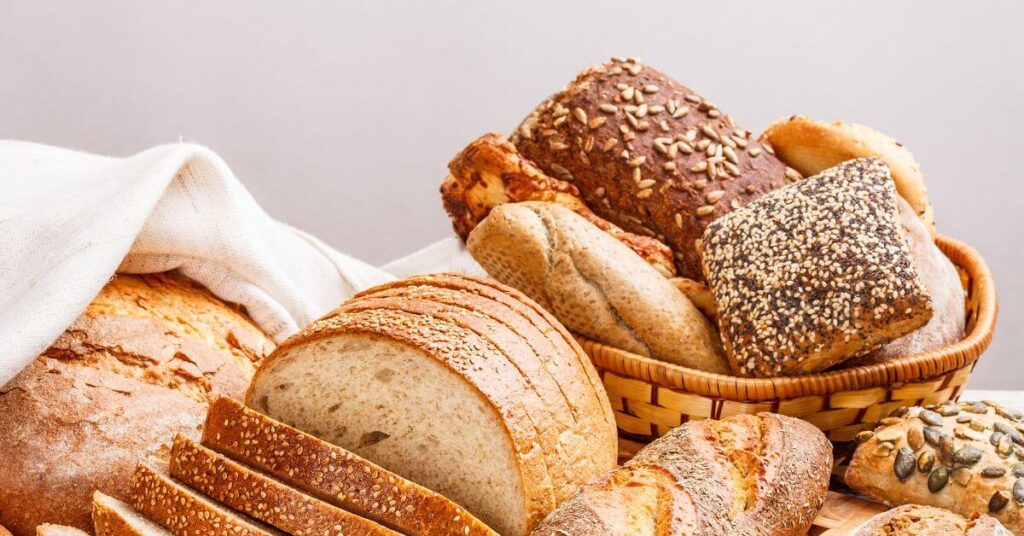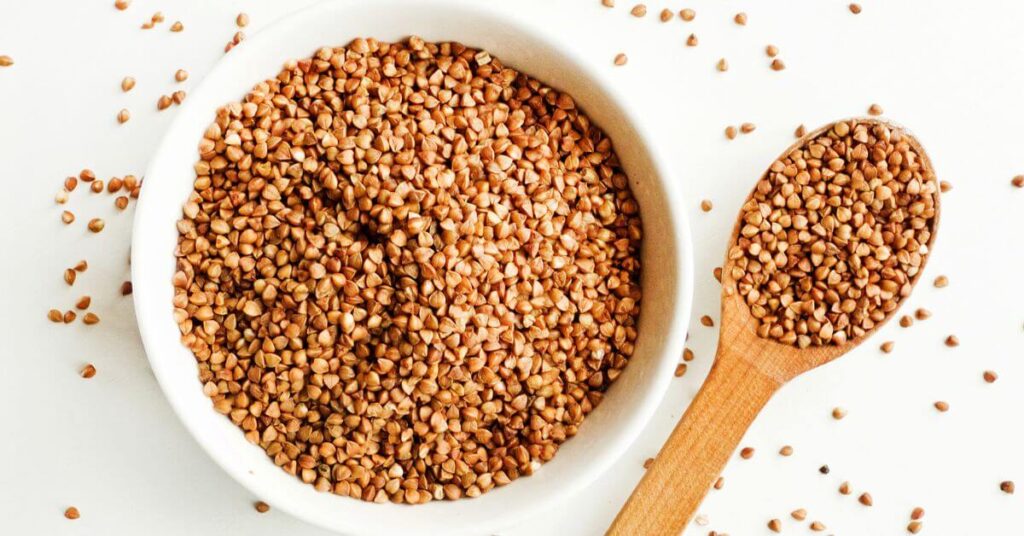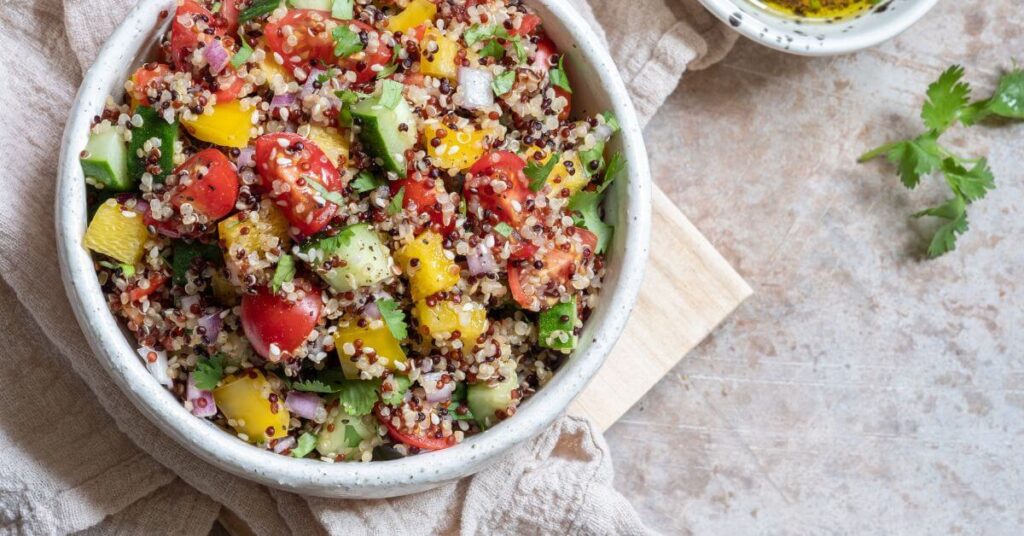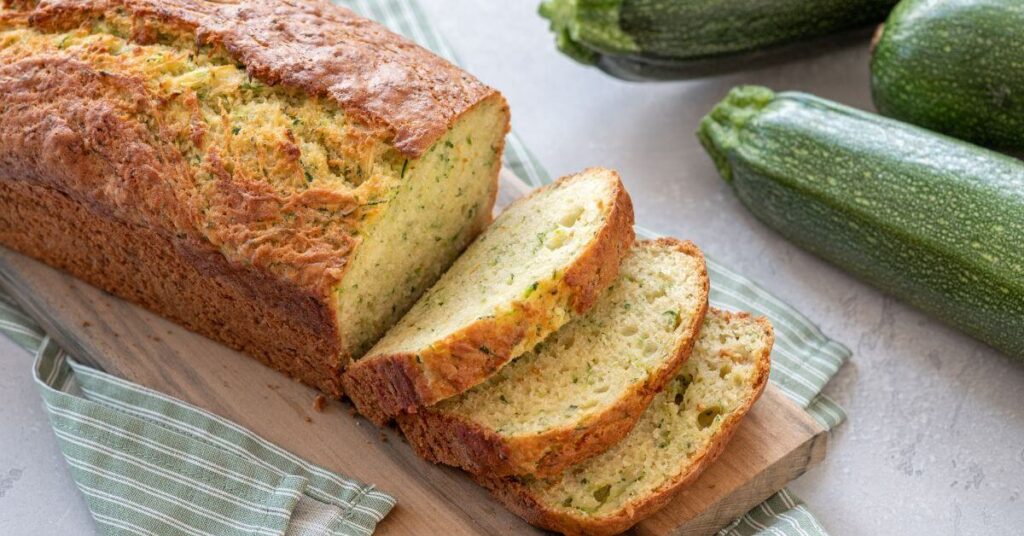Gluten has become a buzzword in recent years, but for individuals with celiac disease or gluten intolerance, it’s more than just a trend. Understanding the nuances of these conditions and transitioning to a gluten-free lifestyle can be a challenging process. In this guide, we’ll delve into the details of celiac disease, gluten intolerance, and provide a roadmap for making the switch to a gluten-free diet.

What is Gluten and Why is it a Problem for Some People?
According to ndsu.edu, “Gluten is a protein found in wheat, barley, and rye.” While it’s harmless for most people, for those with celiac disease or gluten intolerance, consuming gluten can trigger a range of uncomfortable symptoms. These symptoms can vary widely and include digestive issues, fatigue, skin problems, and more.

Celiac Disease vs. Gluten Intolerance: Understanding the Differences
If you suspect you’re having issues with gluten, don’t jump directly to conclusions. There are many ways your body could be reacting to gluten or other foods. It’s important to note that the symptoms of gluten intolerance and celiac disease can overlap with those of other conditions, like food allergies or irritable bowel syndrome (IBS). If you suspect you have a gluten trigger, it’s recommended to consult with a healthcare professional. To help your healthcare provider, keep a detailed food diary to track your symptoms and the foods you’ve consumed.
The two common causes of digestive symptoms caused by gluten are celiac disease and gluten intolerance.
What is Celiac Disease?
Celiac.org defines celiac disease as “an autoimmune disorder where the ingestion of gluten leads to damage in the small intestine lining.” This damage can hinder nutrient absorption, leading to malnutrition and various health complications. The accurate diagnosis of celiac disease is crucial for proper management.

Common symptoms of Celiac Disease include:
- Digestive symptoms, like abdominal pain or discomfort, bloating and gas, diarrhea or constipation, and pale, foul-smelling stools
- Weight loss and malnutrition
- Fatigue and lack of energy
- Anemia and iron deficiency
- Bone and joint pain
- Skin problems, like rashes, eczema or other skin irritations
- Mouth ulcers and sores
- Neurological symptoms, like headaches and migraines, tingling or numbness in hands and feet, and difficulty with balance
- Depression and mood swings
- Delayed growth in children
It’s important to note that some individuals with celiac disease may experience only mild or even no noticeable symptoms, a condition referred to as “silent celiac disease.” Additionally, the symptoms of celiac disease can overlap with those of other medical conditions, making diagnosis challenging. If you suspect you have celiac disease or are experiencing symptoms, it’s crucial to consult with a healthcare professional for proper evaluation and testing.
What is Gluten Intolerance?
Also known as non-celiac gluten sensitivity, gluten intolerance shares some symptoms with celiac disease but lacks the autoimmune response. Individuals with gluten intolerance experience discomfort after consuming gluten, but their intestines remain intact.

Common symptoms of gluten intolerance include:
- Digestive symptoms, like abdominal pain or discomfort, bloating and gas, diarrhea or constipation, and nausea and vomiting
- Fatigue and lack of energy
- Headache and migraine
- Joint pain and muscle aches
- Brain fog and cognitive issues, like difficulty concentrating, memory problems, and confusion
- Skin problems, like rashes, eczema or other skin irritations
- Depression and mood swings
- Stomach upset
However, it’s crucial to rule out celiac disease and other medical conditions before self-diagnosing gluten intolerance. Only a healthcare provider can provide a definitive diagnosis and guide you in managing your symptoms effectively.

Suspect You Have Celiac Disease? The 3 Necessary Steps for Definitive Diagnosis
I always recommend consulting your healthcare practitioner if you suspect you have celiac disease. Here’s some tips to help make the celiac disease diagnosis process a bit easier.
- Continue Gluten Consumption: Counterintuitively, consuming gluten is essential for accurate testing. If you suspect celiac disease, don’t eliminate gluten from your diet until testing is complete.
- Prepare for Your Doctor’s Visit: Utilize my symptom assessment tool and quiz “Do I have celiac disease?” here to evaluate your risk. Share the results with your healthcare provider.
- Request Tests: Ask your doctor or a celiac disease specialist for tests like IgA, IgG, and TTG. These tests are the initial steps to diagnose celiac disease. Further tests may be necessary to confirm the diagnosis.
The Gluten-Free Diet: A Management Tool, Not a Cure-All
The gluten-free diet is the primary treatment for both celiac disease and gluten intolerance. However, it’s important to differentiate between the two conditions. Celiac disease requires careful management to reduce inflammation and promote gut health, particularly due to its autoimmune nature. Incorporating naturally gluten-free, anti-inflammatory foods can be beneficial for overall health.
While there currently is no cure for celiac disease, there is research being completed with hopes of eventually cracking the code.
Instead, following a strict gluten-free diet is the best way to manage your symptoms. As a registered dietitian with a longtime celiac disease diagnosis, here are some of my recommendations.

Naturally Gluten-Free AND Anti-Inflammatory Foods
Here are a few naturally gluten free ingredients that also reduce inflammation:
- Berries
- Dark leafy greens
- Broccoli
- Tomatoes
- Avocado
- Turmeric
- Nuts
- Fish
- Olive oil
- Dark chocolate
- Ginger
- Garlic
- Green tea
Gluten-Free Grains
Here’s a list of some common gluten-free grains and grain alternatives that can be incorporated into a gluten-free diet:

- Rice: White rice, brown rice, black rice, and wild rice are all gluten-free options that can be used in a variety of dishes, from savory to sweet.
- Quinoa: A versatile and protein-rich grain, quinoa is an excellent source of nutrients and can be used as a base for salads, bowls, and more.
- Millet: Mild in flavor and easy to digest, millet can be used as a rice substitute or added to soups and stews.
- Amaranth: This tiny grain is high in protein and offers a nutty flavor. It can be used in both sweet and savory dishes, such as porridge or as a side dish.
- Buckwheat: Buckwheat is actually gluten-free, even though the word “wheat” is in its name. It can be used to make gluten-free pancakes, noodles, and more.
- Sorghum: With a mild taste, sorghum is a versatile whole grain that can be used in salads, soups, and as a side dish.
- Teff: This tiny grain is a staple in Ethiopian cuisine and is known for its rich iron content. It can be used to make gluten-free flatbreads or porridge.

- Oats: While oats are naturally gluten-free, they are often processed in facilities that handle gluten-containing grains. Look for certified gluten-free oats if you have celiac disease or severe gluten intolerance.
- Corn: Corn and its derivatives, such as cornmeal and corn flour, are gluten-free and can be used to make cornbread, tortillas, and more.
- Legumes: While not grains, legumes like lentils, chickpeas, and beans are excellent sources of protein and can be used in various dishes, including soups, stews, and salads.
- Cassava: Also known as yuca, cassava is a starchy root vegetable that can be used to make gluten-free flours for baking and cooking.
- Coconut: Coconut flour and shredded coconut are gluten-free alternatives that can add flavor and texture to both sweet and savory dishes.
- Potatoes: Potatoes and potato-based products, like potato starch, are gluten-free and can be used in a variety of recipes.
- Sorghum: A whole grain with a mild taste, sorghum can be used in soups, stews, and as a side dish.
- Buckwheat: Despite its name, buckwheat is gluten-free and can be used to make pancakes, noodles, and porridge.

Remember to always check labels and ensure that the products you’re purchasing are certified gluten-free, especially if you have celiac disease or a severe gluten intolerance. Incorporating a variety of these gluten-free grains into your diet can help you maintain a balanced and nutritious eating plan while avoiding gluten. If you accidentally eat gluten, don’t panic! Check out my three steps for handling a gluten incident.

4 Pillars of a Budget-Friendly Gluten-Free Lifestyle
- Shop the Perimeter: When you go grocery shopping, avoid the inner aisles. Naturally gluten-free foods like fruits, vegetables, meat, poultry, fish, and dairy are your healthiest and easiest options. Plus, these items don’t carry a markup for being labeled gluten-free.
- Couponing and Bulk Purchasing: Sign up for coupons from gluten-free product manufacturers and non-profit organizations. These can help you save over time and try new gluten-free products.
- Embrace Baking: Learn to bake gluten-free at home. Once you’ve mastered it, you’ll save money compared to store-bought options. Freeze extra baked goods for future use.
- Smart Shopping: Utilize online resources to compare prices and order gluten-free products from different sources. Research before shopping can save time and money.
Luckily, as gluten-free becomes more common to see in grocery stores the mark up in prices has gone down slightly and the availability of products to choose from has increased.
Delicious Gluten-Free Recipes
If you’re just starting out on a gluten-free diet or if you’re an old hat, new recipes are always fun to try! Here’s some of my favorites:

Quinoa Salad with Fresh Veggies and Lemon Vinaigrette
Ingredients:
- 1 cup quinoa, cooked and cooled
- Assorted fresh vegetables (cucumbers, cherry tomatoes, bell peppers, red onion), diced
- Fresh herbs (parsley, mint), chopped
- Feta cheese (optional), crumbled
- Lemon vinaigrette (lemon juice, olive oil, garlic, salt, pepper)
Instructions:
- Cook the quinoa according to the package. Typically you put a 1:2 quinoa:water ratio in a pot, bring the water to a boil, reduce the heat to low, cover, and let it simmer for about 15-20 minutes, or until the quinoa is tender and the water is absorbed. Remove from heat and let it sit, covered, for 5 minutes.
- While the quinoa is cooking, wash and dice the assorted fresh vegetables and herbs of your choice. For me this includes cucumbers, cherry tomatoes, bell peppers, red onion, parsley and mint.
- Once the veggies are prepped, in a small bowl, whisk together the lemon juice, olive oil, minced garlic, salt, and pepper. Adjust the quantities to taste.
- In a large mixing bowl, combine the cooked and cooled quinoa with the diced fresh vegetables and chopped herbs. (Optional: If desired, add crumbled feta cheese to the salad for extra creaminess and flavor.)
- Pour the lemon vinaigrette over the quinoa and vegetable mixture. Toss everything together until the salad is evenly coated with the vinaigrette.
- Enjoy it a side dish or add a protein for a main entree!

Gluten-Free Zucchini Bread
Ingredients:
- 2 cups grated zucchini (about 2 medium zucchinis)
- 1 1/2 cups gluten-free all-purpose flour
- 1/2 cup almond flour
- 1 teaspoon baking powder
- 1/2 teaspoon baking soda
- 1/2 teaspoon salt
- 1 teaspoon ground cinnamon
- 1/2 teaspoon ground nutmeg
- 1/2 cup coconut sugar or brown sugar
- 1/4 cup coconut oil, melted
- 2 large eggs
- 1 teaspoon vanilla extract
- 1/2 cup unsweetened applesauce
- 1/2 cup chopped nuts (walnuts, pecans), optional
Instructions:
- Preheat your oven to 350°F (175°C) and grease a 9×5-inch loaf pan.
- Place the grated zucchini in a clean kitchen towel and squeeze out any excess moisture.
- In a large bowl, whisk together the gluten-free all-purpose flour, almond flour, baking powder, baking soda, salt, cinnamon, and nutmeg.
- In another bowl, whisk together the coconut sugar, melted coconut oil, eggs, vanilla extract, and applesauce until well combined.
- Gradually add the wet ingredients to the dry ingredients and mix until just combined.
- Fold in the grated zucchini and chopped nuts (if using).
- Pour the batter into the prepared loaf pan and smooth the top with a spatula.
- Bake for 50-60 minutes, or until a toothpick inserted into the center comes out clean.
- Allow the zucchini bread to cool in the pan for about 10 minutes, then transfer it to a wire rack to cool completely before slicing.
Enjoy your homemade gluten-free zucchini bread as a delightful snack or breakfast option. The addition of zucchini not only adds moisture but also sneaks in some extra veggies!
For other gluten-free recipes, check out my blog articles featuring Gluten-Free Sourdough Bread, Sardine-Stuffed Avocados, Gluten-Free Cast Iron Skillet Cheese Pizza, and all the blog posts in the Recipe Archives seen here.
Conclusion
In conclusion, navigating celiac disease and gluten intolerance involves understanding your condition, making informed choices, and embracing a gluten-free lifestyle. By following the steps outlined in this guide, you can effectively manage your dietary needs and lead a healthy, fulfilling life.

